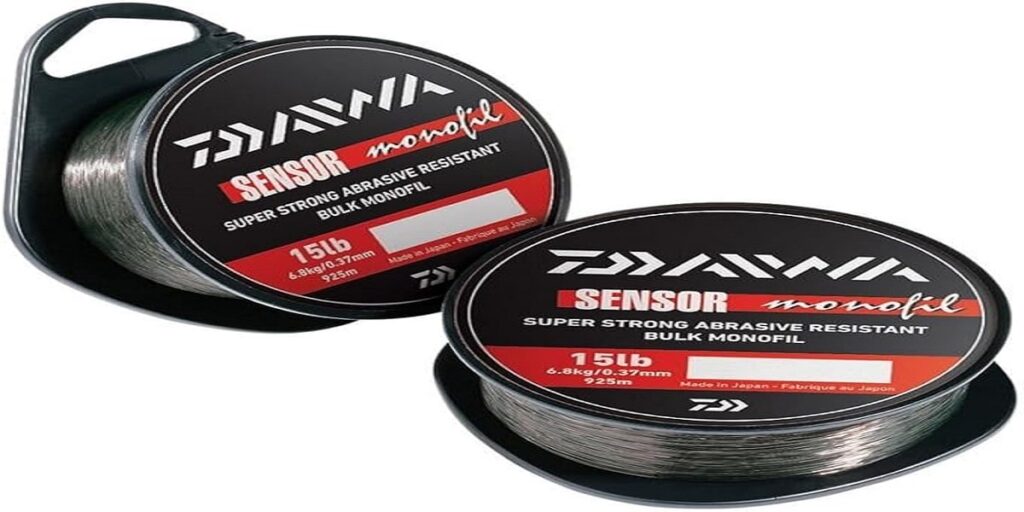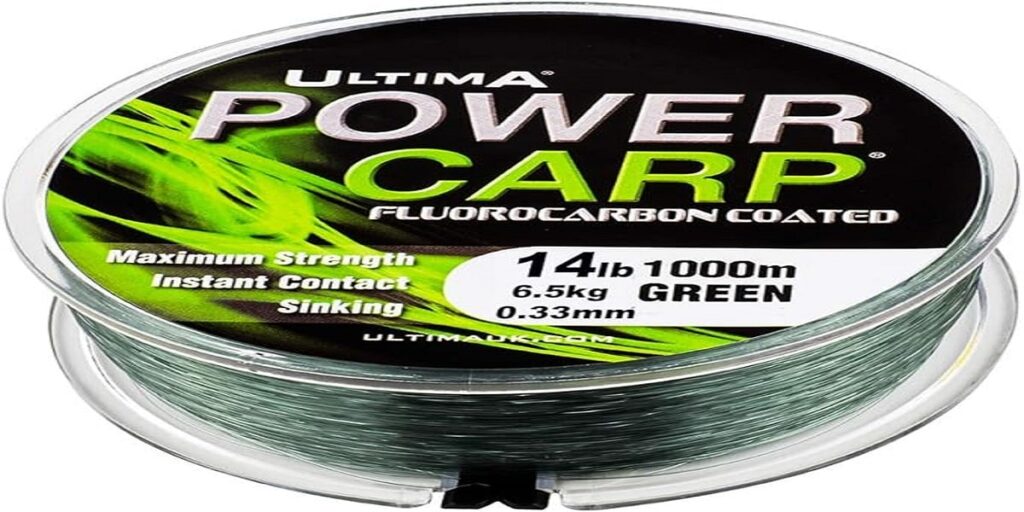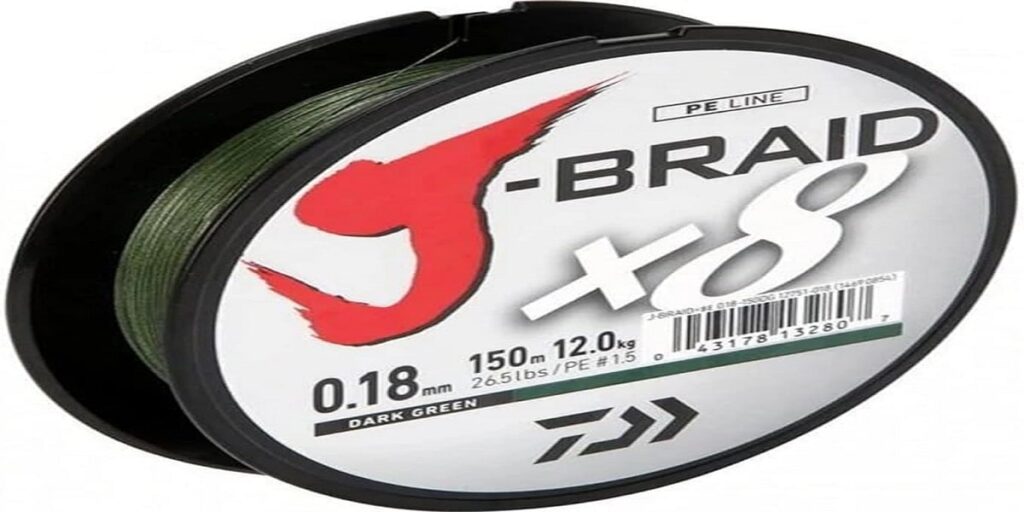What is the best line for crankbaits? And how does one choose the ideal line for carp fishing? The realm of fishing line types and their uses can be perplexing, to put it mildly. Serving as the delicate yet crucial bridge between the angler and the catch, the right fishing line is instrumental in the success of any fishing adventure. Given the plethora of options available, making an informed decision can be a daunting task. In this guide, we’ll explore the nuances of the three primary fishing lines—monofilament, braided, and fluorocarbon—and highlight their best applications.
Monofilament (Mono) Line
A true stalwart in the angling realm, monofilament, affectionately termed ‘mono’, is characterized by its single-strand nylon composition. It’s the versatility of mono, with its signature stretch and translucence, that’s endeared it to generations of anglers. Typically used for float fishing and some carp anglers still prefer this selection.

Main Characteristics
- Material: Single strand of nylon.
- Stretch: Moderate to high elasticity.
- Visibility: Clear to slightly visible underwater.
- Durability: Moderate resistance to abrasion.
Advantages
- Versatility: Mono is an all-rounder. It’s suitable for a variety of fishing conditions and species.
- Forgiveness: Its stretchiness allows for better shock absorption, especially when a fish strikes or makes a sudden move.
- Cost-effective: Typically cheaper than its counterparts, making it a good choice for beginners.
Applications
- Topwater lures: The buoyant nature of mono makes it great for floating lures.
- Float Fishing: A main staple of most anglers who prefer to float fish.
- General-purpose fishing: Its flexibility and cost-effectiveness make it suitable for many angling scenarios.
Fluorocarbon Line
Fluorocarbon has revolutionized stealth fishing, owing to its uncanny ability to blend in underwater. Made from polyvinylidene fluoride, its refractive index closely mirrors that of water, making it an angler’s secret weapon in clear water situations. Interestingly, many experienced fishermen claim that it’s the best line for crankbaits, especially when trying to achieve longer and more accurate casts. The unique properties of fluorocarbon not only ensure invisibility beneath the water’s surface but also offer the right balance of strength and flexibility, making it ideal for those dynamic lure presentations. Whether you’re targeting bass in a crystal clear lake or scouting for pikes in a transparent stream, using the right line can often make the difference between a catch and a miss.

Characteristics
- Material: Single strand of polyvinylidene fluoride.
- Stretch: Low.
- Visibility: Nearly invisible underwater.
- Durability: High resistance to abrasion and UV damage.
Advantages
- Invisibility: Its refractive index is close to that of water, making it hard for fish to detect.
- Sensitivity: Less stretch than mono means better bite detection.
- Durability: Resistant to sunlight and chemicals, it tends to last longer.
Applications
- Leader material: Often used in conjunction with other lines as a nearly invisible leader.
- Clear water fishing: Its stealthy nature is advantageous in crystal-clear waters where fish might be line-wary.
- Crankbaiting: The slight give of fluorocarbon, combined with its invisibility, makes it the best line for crankbaits.
Braided (Braid) Line
The braided line is a testament to how time-honoured techniques can seamlessly meld with modern innovation. Comprising multiple synthetic strands woven together, braided lines promise unparalleled strength and sensitivity.

Main Characteristics
- Material: Multiple strands of synthetic fibers woven together.
- Stretch: Minimal to none.
- Visibility: Noticeable underwater.
- Durability: Highly resistant to abrasion.
Advantages
- Sensitivity: With little to no stretch, anglers can feel even the slightest nibble.
- Longer casts: Its thin diameter and lightweight nature allow for farther casting.
- High strength-to-diameter ratio: A thinner braid can hold more weight, which is ideal for heavy cover fishing.
Applications
- Heavy vegetation: Its resistance to abrasion makes it great for areas with lots of structures or underwater plants.
- Deep-sea fishing: The thin line allows for more reel capacity, which is beneficial when fishing in deeper waters.
- Jigging: The sensitivity ensures that every movement at the bottom is felt.
The Role of Line Diameter and Breaking Strain
Line diameter and breaking strain are pivotal factors influencing a line’s performance. While the former dictates casting distance, lure action, and line visibility, the latter — commonly termed “pound test” — determines the line’s breaking point. Modern lines offer impressive breaking strains without compromising on diameter, meaning strength need not come at the expense of finesse.
Practical Applications Across Angling Scenarios
- Float Fishing: Monofilament, given its buoyant nature, is the preferred choice. Typical breaking strains range from 3lb to 8lb, with diameters around 0.10mm to 0.20mm.
- Carp Fishing: Monofilament and fluorocarbon are dominant players. Anglers lean towards 10lb to 20lb breaking strains and diameters from 0.28mm to 0.40mm.
- Deep Sea Fishing: The strength and compactness of braided lines rule the roost. Breaking strains span from 20lb to 100lb, with diameters between 0.20mm to 0.50mm.
- Predator Fishing: Braided lines are the norm, usually paired with a wire or heavy fluorocarbon leader. Breaking strains oscillate between 20lb to 80lb, and diameters range from 0.18mm to 0.40mm.
Summary
Selecting the right fishing line is akin to setting the foundation of a successful fishing trip. It’s about more than just material—it’s about matching the line’s characteristics to the angling challenge at hand. With the insights from this guide, you’re now equipped to reel in success, one cast at a time.